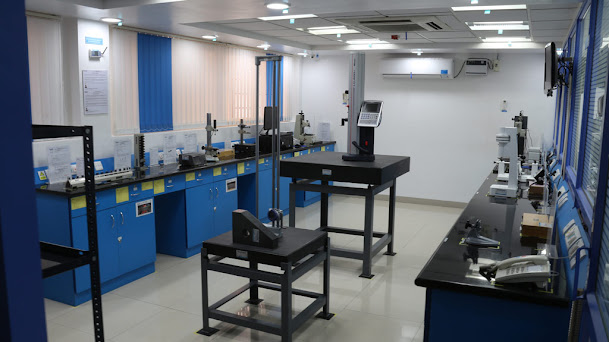NATA Accredited calibration is a process that test facilities follow to ensure that equipment they use to test devices adhere to standards set by the network equipment industry. An independent third party verifies that the test equipment and test process adhere to industry standards and is used to make sure that test results are reproducible and valid.
A NATA Accredited calibration process follows set steps to ensure the calibration of test equipment and test procedures adhere to established industry standards. It’s essential that test facilities understand the NATA Accreditation process and its importance in device testing. This article will give you a brief overview of the NATA Accredited calibration process, as well as some of the common benefits of having your calibration process verified by NATA.
What is NATA Accredited Calibration?
NATA Accredited calibration is a process that test facilities use to ensure the equipment they use for device testing meets industry standards. It’s important for test facilities to understand the requirements and benefits of NATA Accredited Calibration because it can help maintain the integrity of your device testing. NATA Accreditation is required by many manufacturers to verify that their devices adhere to industry standards set by the network equipment industry.
Additionally, some companies may require or request NATA Accreditation as part of their quality control process. Since NATA Accredited calibration processes follow set steps to ensure calibration procedures adhere to established industry standards, it’s crucial that test facilities understand its importance in device testing. This article will provide you with a brief overview of what NATA Accredited Calibration is and explain how it can benefit your business.
Benefits of Having Your Calibration Process Verified
NATA Accredited calibration provides an independent third party verification of a calibration’s validity and accuracy. This type of verification protects manufacturers from the costs of having to recall or re-test devices due to inaccurate test results. There are three benefits of having your calibration process verified by NATA: 1. Validation 2. Verification 3. Reduced Risk 1. Validation: One benefit of having your calibration process verified by NATA is validation, which means it will be easier for manufacturers to see if their device’s results are in line with industry standards or not.
With validation, you can be sure that your device is within the parameters set by its manufacturer and that it will pass any required tests with flying colors! 2. Verification: Another benefit of having your calibration process verified is verification- which means you'll have a thorough understanding of how much risk there is around your test results before they're published on the market by verifying the compliance protocols for a particular product or service. With this information, you can determine whether or not it's worth continuing with that product or service at all or whether it's better to switch over to another device altogether before it becomes too costly!
Steps of a NATA Accredited Calibration
The five steps of a NATA Accredited calibration process are: 1. Setup 2. Calibration 3. Collection and Analysis 4. Verification and Validation 5. Release of Test Results NATA Accredited calibration is an important part of the device testing process because it ensures the test equipment and procedures adhere to the standards set by the network equipment industry.
There are many benefits to having your calibration verified by a third party, including: - Having a third party verify that your calibration process is reproducible, valid, and adheres to established industry standards - Having your results certified so you have certainty about their accuracy - Ensuring only appropriate measurements are taken for each test in order to obtain relevant data.
How to Get Your Calibration Process Verified?
First, contact the NATA Accreditation program to find a test facility near you. Be sure to provide the following information: -The type of device that will be calibrated -A list of equipment needed for the calibration process -Location and date of calibration -An estimate on how many devices will be tested during the calibration process NATA Accredited Calibration is a system in which an independent third party verifies test procedures and equipment used by facilities to ensure they adhere to industry standards. It's imperative that companies understand the importance of having their calibration processes verified by NATA before they use them.
Conclusion
NATA Accredited Calibration is a process that ensures that your lab equipment is in working order. If your calibration process was not verified by a NATA accredited laboratory, your data could be in jeopardy of being lost. Before you invest in a NATA accredited laboratory, you need to be sure that it will make your data available to you in case of an audit.

Comments
Post a Comment